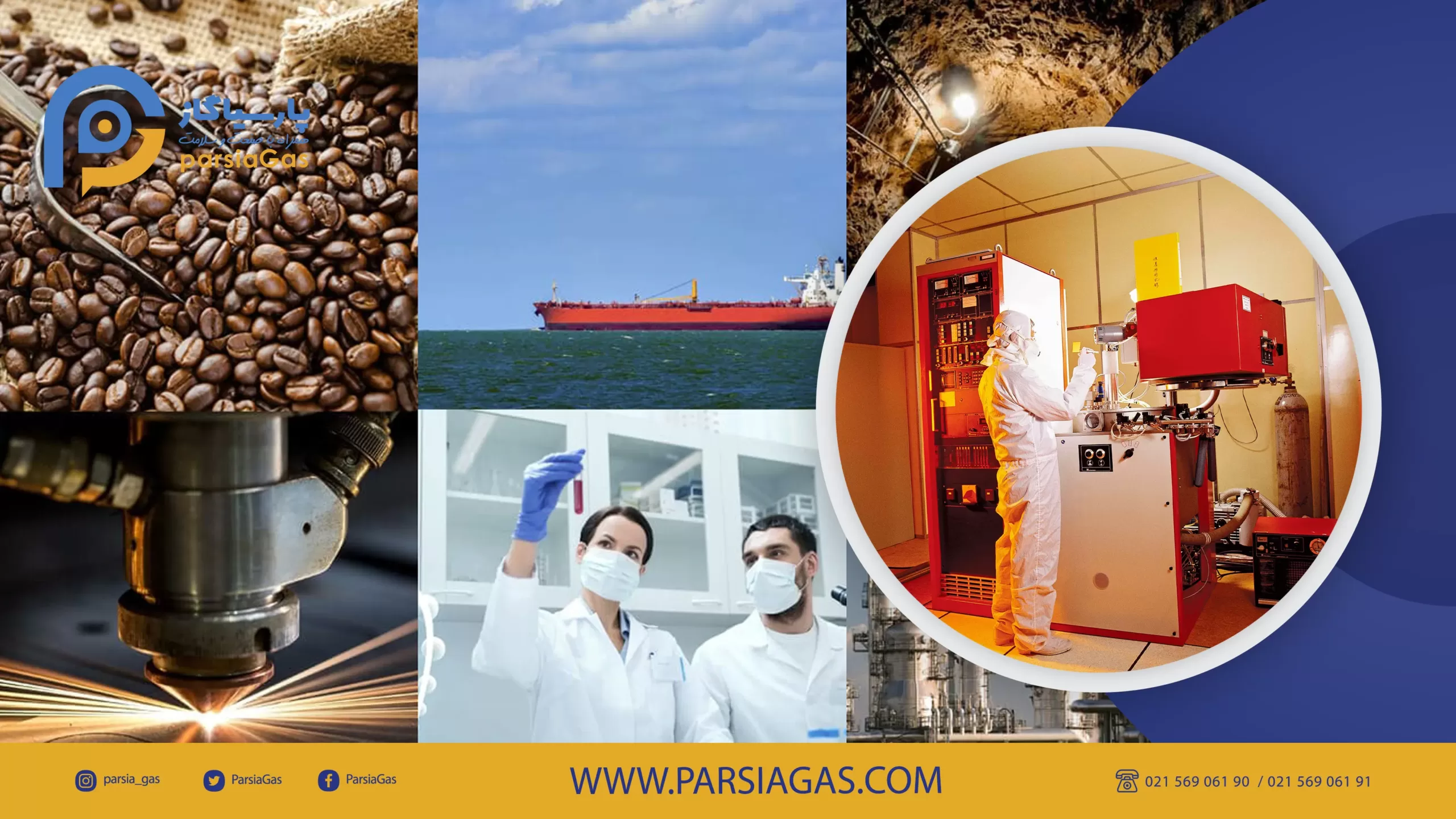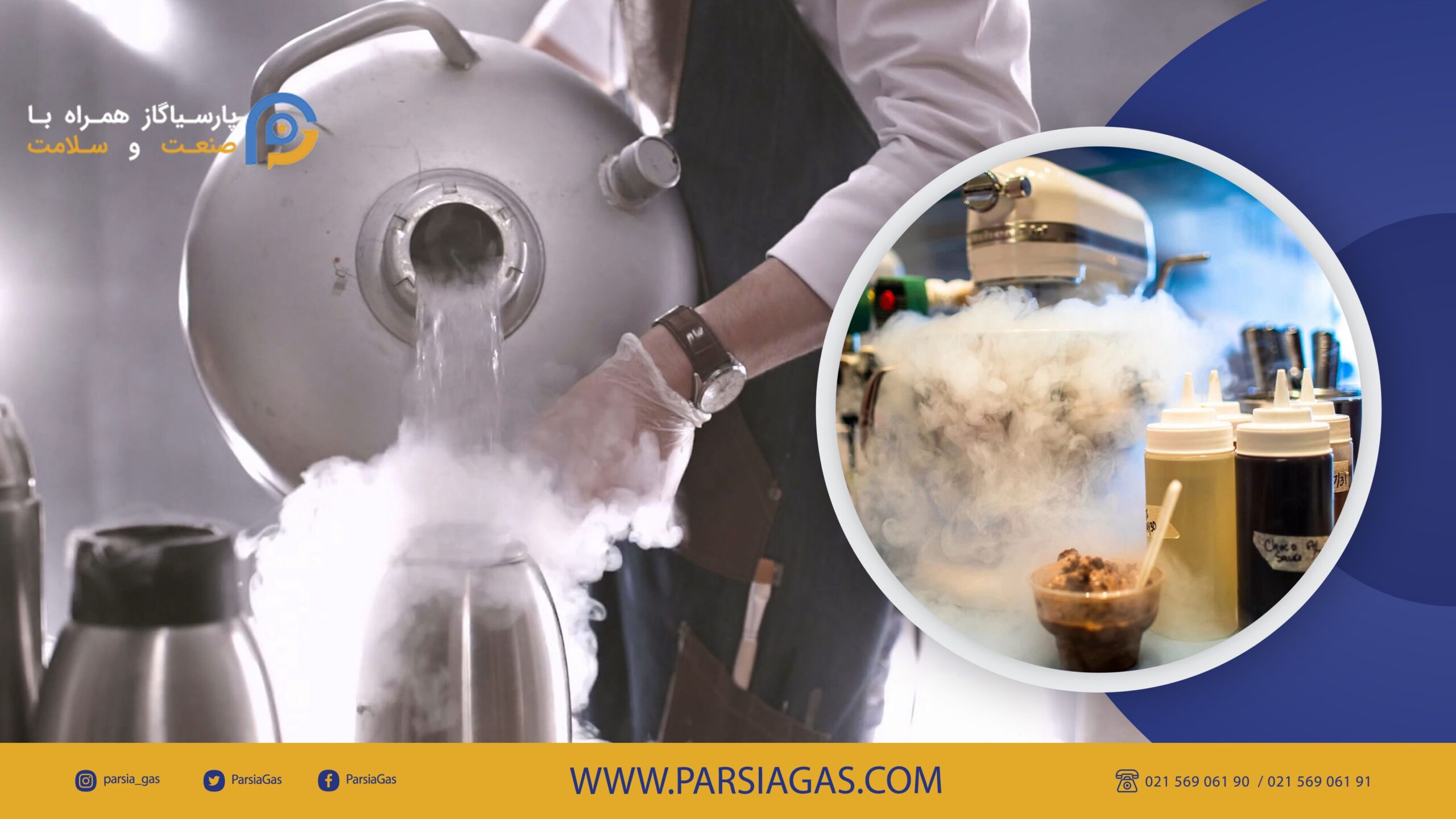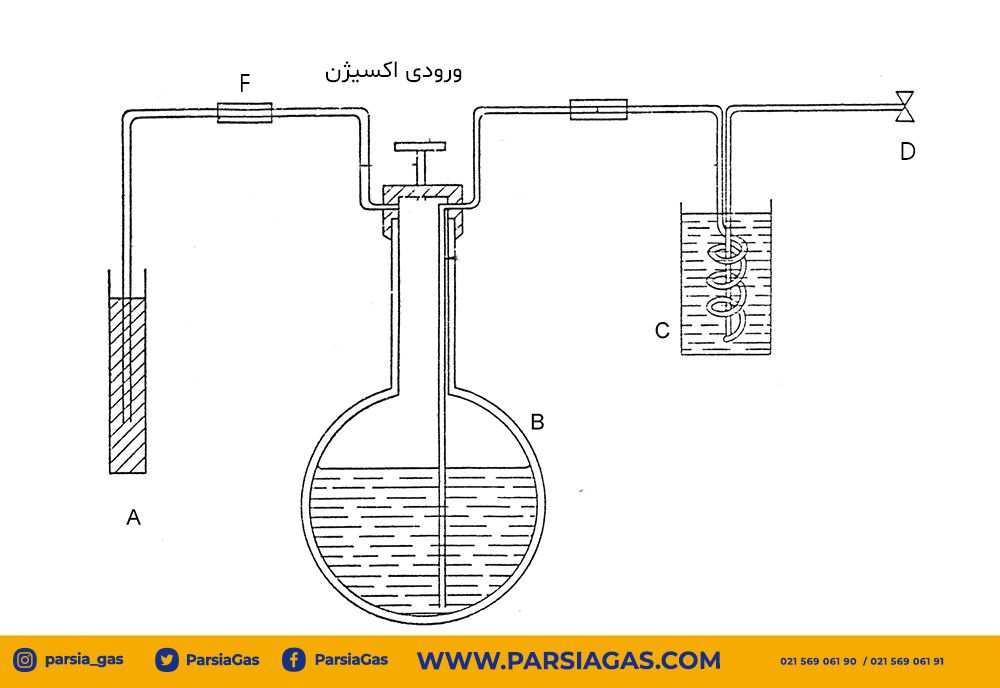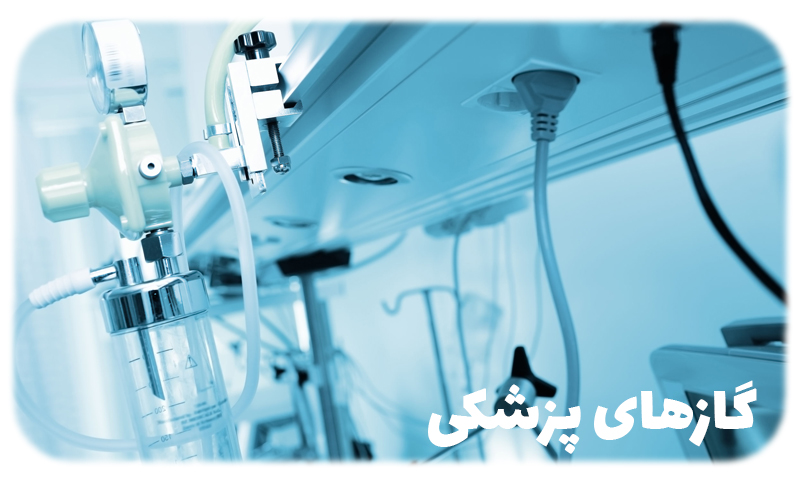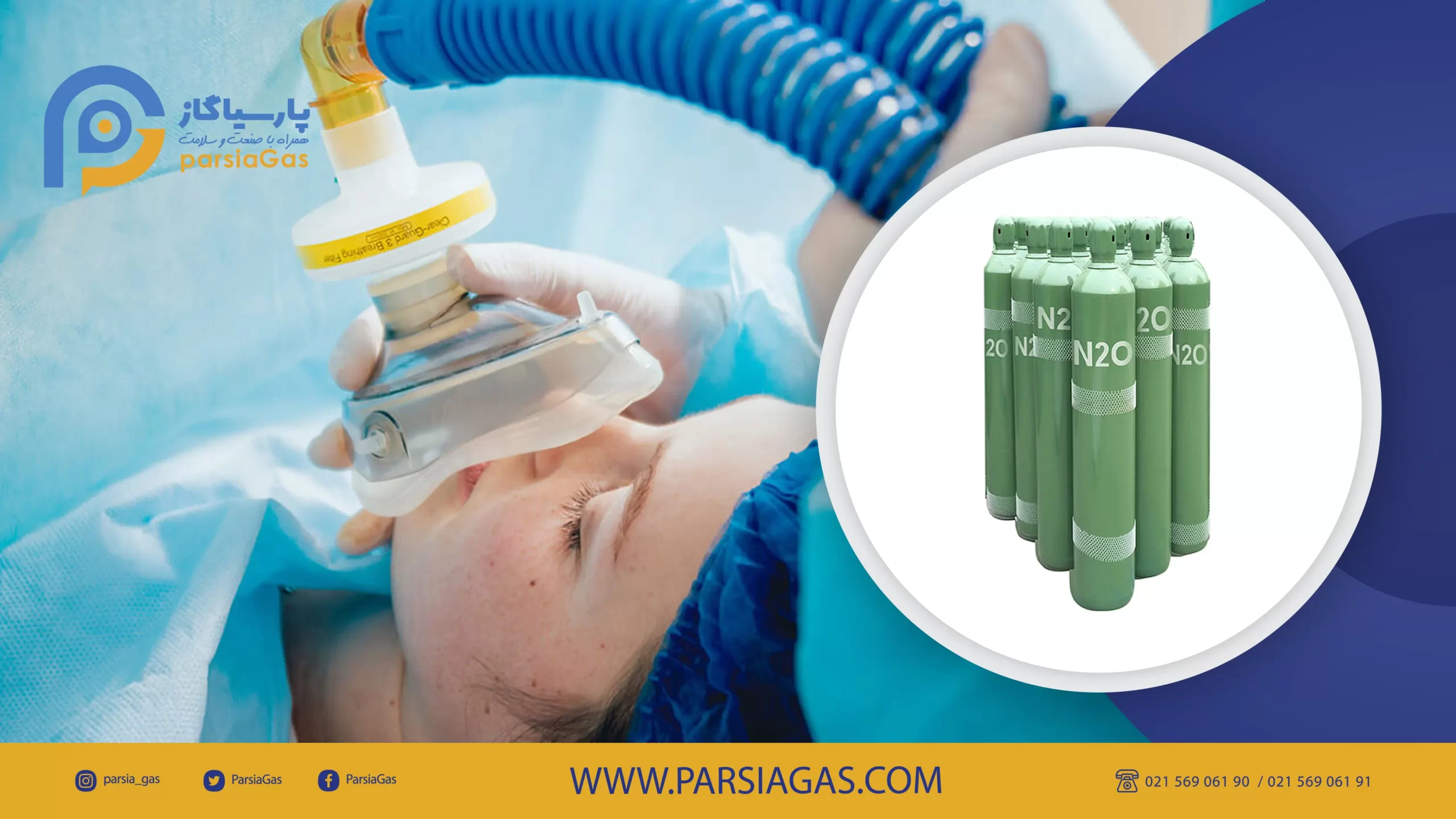Applications of nitrogen in gas and liquid form
Nitrogen is an inert gas that is suitable for a wide range of applications, covering various aspects of chemical production, processing, transportation and transport.
Liquid nitrogen seems very mysterious and scientific, but what are the uses of nitrogen?
Five daily uses of nitrogen gases
Nitrogen is one of those gases that we’ve all probably heard of but know very little about. It is the seventh most abundant element found in the entire solar system. Almost 80% of the earth’s atmosphere consists of this gas. In terms of mass, nitrogen gases make up about 3% of the human body, and after oxygen, carbon and hydrogen, it is the most important element in the body. We can also find it in our nucleic acids (DNA and RNA) and it is also essential in cell growth, energy production and many other body processes. As if all of this wasn’t amazing enough, nitrogen affects our lives every day in the way it’s used in various industries. Chemical industries use this gas in the production of fertilizer, nylon, nitric acid, paint, medicine and explosives.
Five of the most important uses of nitrogen in daily life:
- Food Industry
- Pharmaceutical
- Electronics
- Manufacturing
- foolad
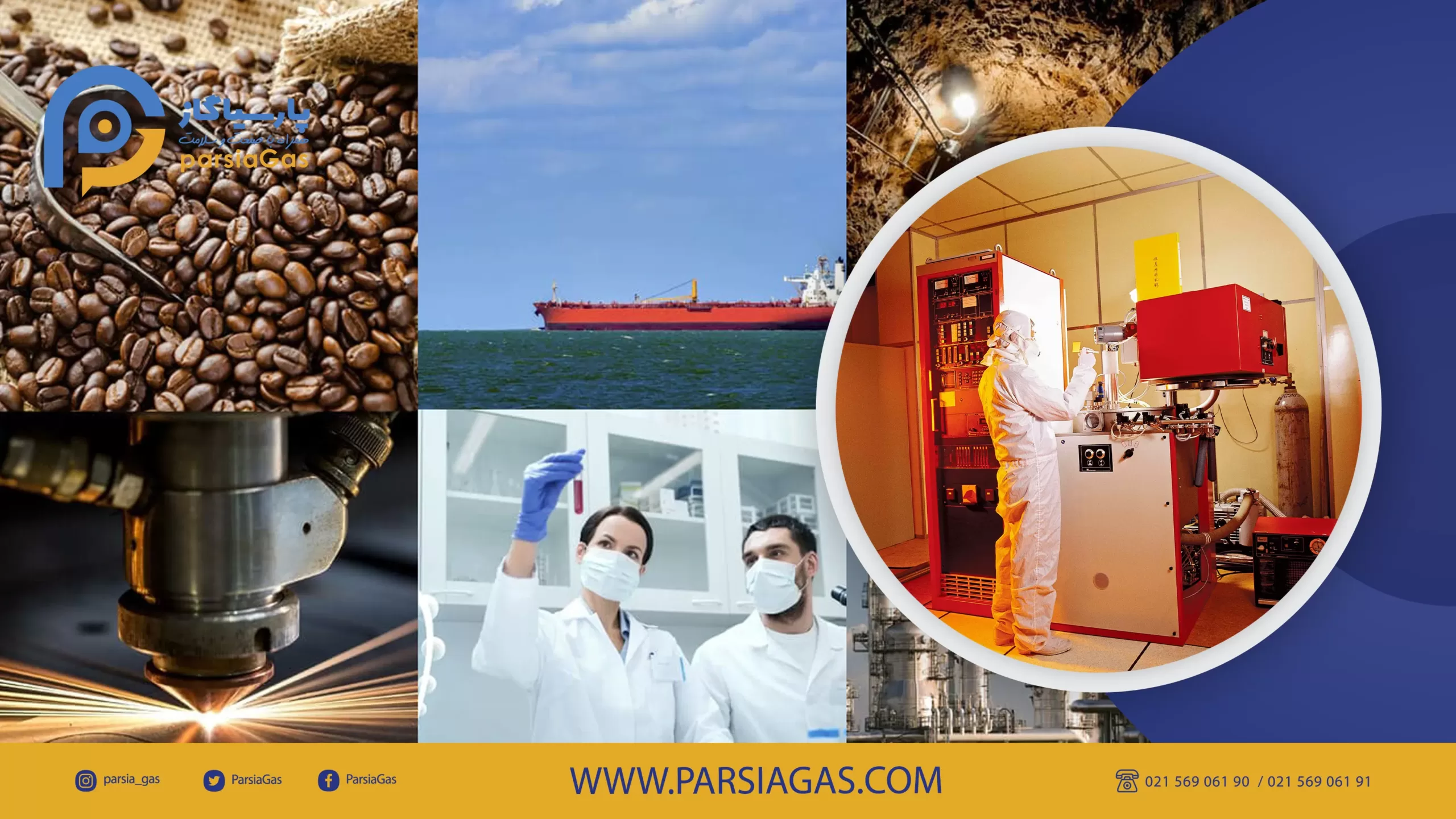
Types of nitrogen applications
Types of Nitrogen Applications Nitrogen is non-reactive and is excellent for cladding and is often used as a purge gas. It can be used to remove contaminants from the process stream by methods such as separation and spraying. Due to its properties, it can be used to protect valuable products from harmful contamination. It also allows safe storage, use of flammable compounds and can prevent combustible dust explosions.
The applications of nitrogen compounds are naturally very diverse due to the large size of this class: therefore, only applications of pure nitrogen are considered here. Two-thirds of the nitrogen produced by the industry is sold as gas and the remaining one-third as liquid. This gas is mostly used as an inert atmosphere. Whenever oxygen in the air causes fire, explosion or oxidation. Some examples are:
Food industry
One of the uses of nitrogen is in the food industry. Nitrogen gases are used to create modified or man-made conditions where they are used with carbon dioxide to help preserve packaged or bulk foods. By protecting against oxidative damage that causes food to rot and spoil, It helps preserve food and is also used to nitrogenate and preserve the freshness of packaged or bulk foods (by delaying release and other forms of oxidative damage such as discoloration). Pure nitrogen is labeled as a food additive in the European Union with the E number E4141.
Use in pharmaceuticals
Another use of nitrogen is that it is very effective in chemical reactions and compounds and has been and still is widely used in the pharmaceutical industry. Many people are surprised that nitrogen can be found in some pharmaceutical drugs. .
It can also be used in other gas mixtures and compounds for other medicinal uses, such as those used with nitrous oxide as an anesthetic.
Nitrogen gases can also be used to preserve sperm, eggs, nerves, blood, stem cells and other biological samples.
Application of nitrogen in construction and production industries
Nitrogen can also be used in production. It is commonly used to shrink joints so that they can be easily inserted and used, and then when they return to normal temperature, they expand and form a tight bond that would not otherwise be possible. It can also be used in liquid form and is used in a number of projects including tunneling and excavation during construction work. Nitrogen is also at the heart of new developments in technology and manufacturing processes.
What gas is used in the manufacture of incandescent lamps?
The lamps should not be filled with air because the hot tungsten wire will ignite in the presence of oxygen. You cannot maintain a vacuum or the external atmospheric pressure will break the glass. Therefore, they must be filled with a non-reactive gas such as nitrogen. We can use inert gases like argon or helium instead of nitrogen, but they are more expensive and rarer than nitrogen.
The use of nitrogen gases in electronics
Nitrogen is even used in many electronic devices or their manufacture. This device is used in the internal functions of many computers and helps prevent them from overheating and burning after hours of continuous use. It is widely used in fire extinguishing systems for information technology (IT) equipment. Because conventional water and extinguishing methods are usually not effective in this type of situation. Nitrogen is also used in x-ray detectors and other electronic devices used in the medical field!
Fire extinguishing systems
Fire suppression is achieved by reducing the oxygen concentration at the point of extinguishment, while remaining at a level acceptable for human exposure for a short period of time.
Stainless steel production
There are various ways in which nitrogen can be added to steel during steelmaking, such as smelting, ladle processing, and casting operations. Effect of nitrogen on hardness, ductility, strain aging and impact properties.
Tire filling systems
Nitrogen is used to inflate the tires of racing cars and airplanes, reducing problems caused by moisture and oxygen in natural air. Nitrogen migrates through tire rubber less than oxygen, meaning your tire pressure will stay more stable in the long run. This means that more consistent inflation pressures are created during use as the tires warm up.
Aircraft fuel systems
Nitrogen is used in some aircraft fuel systems to reduce the risk of fire.
Chemical analysis and chemical industry
Nitrogen is commonly used during sample preparation in chemical analysis. It is used to concentrate and reduce the volume of liquid samples. Nitrogen is also important for the chemical industry. It is used in the production of fertilizer, nitric acid, nylon, paint and explosives.
Using pure nitrogen
Parsia Gas can produce nitrogen in different ranges of purity.
The lower the purity level, the lower the cost of producing nitrogen. For example, the quality of vegetable oil can be maintained by covering 99.5% nitrogen purity. The normal purity of nitrogen for food processing is between 99% and nitrogen purity of less than 96%. 99% is often used in fire and explosion prevention. High purity with a nitrogen content of 99.9% to 99.999% is typically used for laser cutting, electronic soldering, and pharmaceutical applications.
Benefits of Nitrogen:
Liquid nitrogen, which has a boiling point of -196°C, is used for a variety of purposes such as cooling for computers, in medicine to remove excess skin, warts and pre-cancerous cells, and in frostbite, where scientists use the effect of extremely cold temperatures. They study the material, it is used.
Liquid nitrogen also has a large vaporization expansion ratio – one liter of liquid nitrogen can produce about 700 liters of gas – so only a relatively small volume of liquid nitrogen needs to evaporate in a room to create a low oxygen atmosphere. Pressure can be created by boiling nitrogen gas in a sealed container, so insulated pressure vessels are used to store it.

